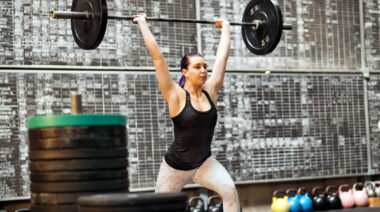This is one of those topics that rarely come up in discussions of weightlifting technique, but it can prove to be the cause of problems. One of them is that it may inhibit a lifter from making a best effort to complete a lifetime PR. I unknowingly developed my escapability when as a youngster my parents enrolled me in judo lessons.
This is one of those topics that rarely come up in discussions of weightlifting technique, but it can prove to be the cause of problems. One of them is that it may inhibit a lifter from making a best effort to complete a lifetime PR. I unknowingly developed my escapability when as a youngster my parents enrolled me in judo lessons.
In the sport of judo, there is a constant dual taking place in an attempt to place oneself in a more favorable position so as to overcome the opponent. One athlete may be thrown by the opponent but can position the body so that a full point is not scored.
This can ultimately lead to a reversal on the mat. This ceaseless jockeying for position and leverage goes on throughout the match until one combatant is declared the winner or the time clock ends the match. A key skill that is acquired in judo is that of escapability—the ability to get out of a perilous situation, often in a very brief amount of time.
Rediscovering Escapability
So I knew I had this skill when I begin weightlifting. I didn’t think much of it, didn’t place any emphasis on it, and have never thought about coaching it until recently. I discovered the value of it one day, however, when I got into a situation that was potentially perilous.
It was a normal training session at the old Downtown LA YMCA. There were about 6 or 7 of the regular lifters there along with coach Bob Hise II, and we were working up in clean & jerk singles.
My legs had always lagged behind my clean, but anything I could stand up with, I could jerk with excellent elbow lock. This particular occasion was at the end of a week of heavy training and we were probably more fatigued than we realized.
I got up to 110 which was a 90% weight. I cleaned it with some difficulty and did a typical grinder to stand. At that point, I figured that I had the jerk nailed. I drove the weight straight overhead and to my surprise, my elbows failed to lock and the weight began to drop from overhead.
On many occasions, it would have been normal to then lose the weight forward or behind and just step out from under it, but this time it could only come straight down. And it did! It actually hit my head. In a flash, I realized I could get seriously injured if I didn’t do something.
Adrenaline hit and it was a life saver. I immediately pancaked and went spreadeagle. I beat the bar down making sure to release my grip on the bar so that I wouldn’t risk a wrist injury.
On the way down I realized that my head was deeper than it was wide so instead of face-planting I turned my head to the side as I hit the floor. Amazing what goes through your mind in a time of extreme peril.
The bar hit the floor, didn’t injure anything, and just rolled forward barely nicking my side turned head. The entire incident was more embarrassment than an indicator of failure.
I walked away relieved but even more confident in my ability to escape peril.
Re-Encountering
I didn’t think about this at all for much of my coaching career. Much of that time the majority of lifters that I coached were juniors and seniors. The majority of them had begun their athletic careers at an early age and learned many general athletic skills. I witnessed a number of harrowing escapes made possible by the escapability skills of some exceptional athletes.
Lately, I’ve been working with more Master athletes, many of whom have started their athletic careers after the age of 40. They had not been involved in grappling or physical contact sports were escapability skills are developed.
Consequently, they are hesitant about descending in the bottom position of the snatch and less frequently the split of the jerk. In the case of the snatch, the conventional thinking was that there was a mobility issue, but since then I think we’ve all found that many who are hesitant about descending into the snatch can do a proper overhead squat. So it’s not a mobility issue.
My take is that several of my master athletes who are hesitant about descending into the full snatch position are inhibited by a lack of confidence in their escapability skills.
I don’t have a strategy for dealing with this problem. My initial observation is that escapability is acquired during a certain window of time, during the younger ages. I suppose that someone could come up with a pathway to acquiring these skills, but I’m not sure that many of our conventional exercise protocols would be very effective.
I’m just identifying a situation here. I think that any coaches working with novice master athletes should keep this in mind when they are dealing with this population. Some of them may never be able to descend into a bottom position without leaving themselves an escape route.
This will also apply to athletes who have good shoulder mobility but still prefer to keep the head from being placed directly under the bar in the jerk. Ah, well. Another dilemma to ponder!
If you would like to learn more about Takano Weightlifting or would like my help on your weightlifting programs, please contact me through the gym’s Facebook page or site.






